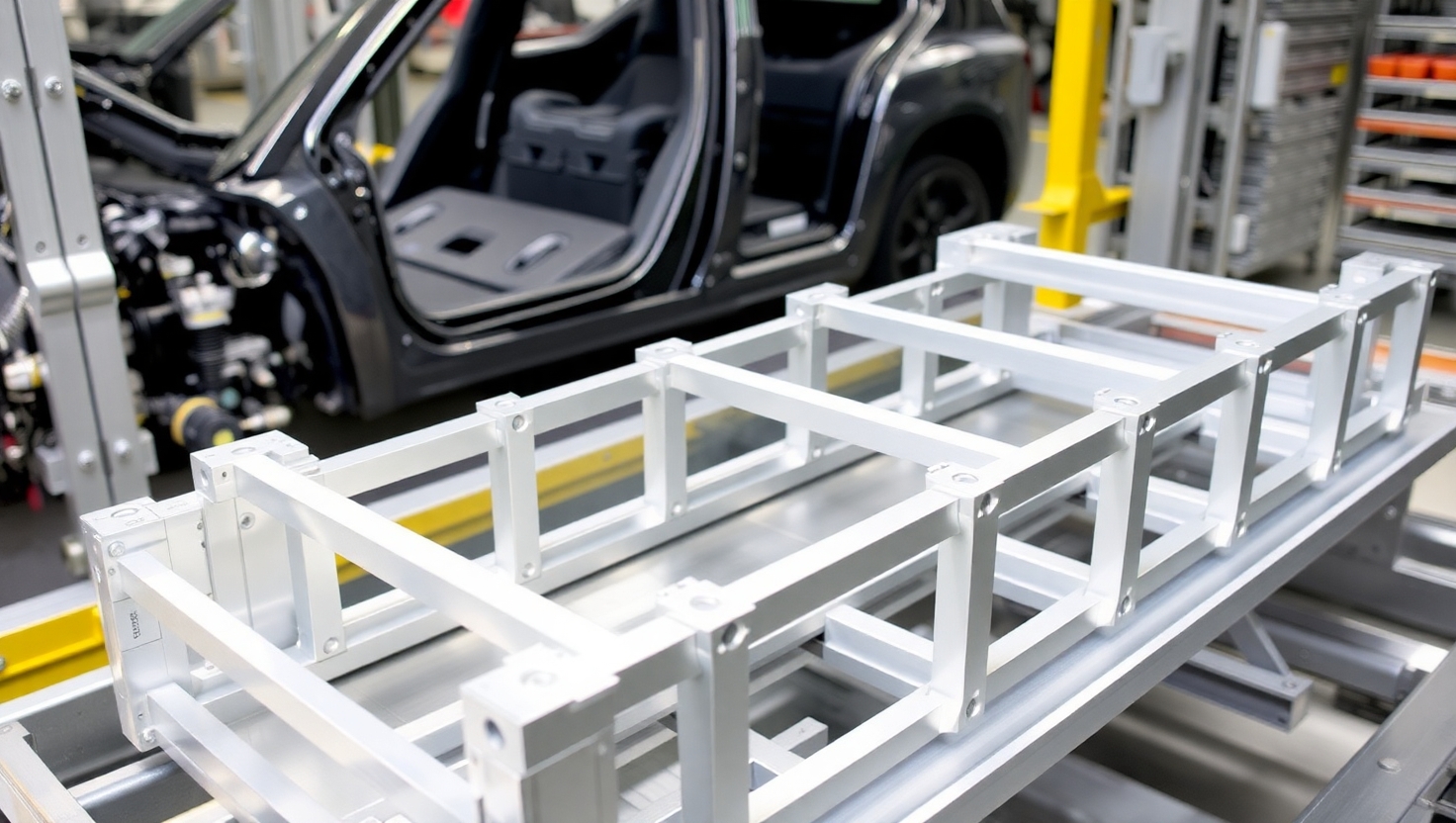Aluminium Extrusion for EV Battery Trays: A Growing Trend in 2025
Published by: ALUTimes | Date: July 16, 2025
Table of Contents
- Introduction
- Why Aluminium for EV Battery Trays?
- Benefits of Aluminium Extrusion in Battery Design
- Key Design Features of Extruded Battery Trays
- Extrusion Process for Battery Tray Profiles
- Comparison with Stamped Steel
- Real-World Use Cases
- Future Outlook for Aluminium in EVs
- Conclusion
- Disclaimer
Introduction
The surge in electric vehicle (EV) adoption in 2025 is pushing automakers to innovate with lightweight, strong, and cost-efficient materials. One of the standout applications is in battery tray design—where aluminium extrusion is fast becoming the material of choice. This article explores how aluminium extrusion plays a key role in improving the structural integrity, thermal performance, and recyclability of EV battery trays.
Why Aluminium for EV Battery Trays?
Battery trays must support hundreds of kilograms while resisting corrosion and dissipating heat. Aluminium is ideal due to its high strength-to-weight ratio, excellent conductivity, and recyclability. Unlike steel, aluminium resists corrosion even without coatings, and its lighter weight improves vehicle range and efficiency.
Benefits of Aluminium Extrusion in Battery Design
- Lightweight yet strong: Reduces vehicle weight without compromising safety
- Custom shapes: Enables integration of cooling channels, mounting brackets, and reinforcements
- Thermal management: Conducts heat away from battery cells efficiently
- Corrosion resistance: Prolongs the lifespan of tray assemblies
- Sustainability: Aluminium is fully recyclable with minimal energy input
Key Design Features of Extruded Battery Trays
Designers are leveraging aluminium extrusion to create complex tray assemblies with the following features:
- Integrated cooling fins and channels for liquid cooling systems
- Crash management zones for impact absorption
- Hollow profiles to reduce material use
- Standardized interface points for modular battery pack designs
Extrusion Process for Battery Tray Profiles
The process typically involves:
- Designing the die to match complex tray profiles
- Extruding heated aluminium billets through the die
- Stretching and cooling the extruded shape
- Cutting to required lengths and machining features
- Joining multiple profiles via friction stir welding or mechanical fastening
- Applying surface finishes such as anodizing or powder coating
Comparison with Stamped Steel
While steel offers higher tensile strength, it requires coatings to prevent corrosion, and it adds significant weight. Aluminium extrusions offer better corrosion resistance and 30–50% weight savings. Extrusion also enables more flexible and integrated designs, reducing part counts and assembly complexity.
Real-World Use Cases
- Tesla Model Y: Uses aluminium battery enclosures for weight reduction
- Volkswagen MEB Platform: Integrates extruded aluminium frames in its skateboard-style chassis
- Mahindra EVs: Adopts local aluminium extrusions for cost efficiency
Future Outlook for Aluminium in EVs
By 2030, it is estimated that over 80% of EVs will feature aluminium battery enclosures. Innovations such as 3D-printed dies, AI-optimized extrusion profiles, and seamless integration with composite materials are driving further adoption. With India’s aluminium production capacity and global supply chains maturing, aluminium extrusion will be key to future EV platforms.
Conclusion
Aluminium extrusion is revolutionizing EV battery tray design. Its blend of strength, sustainability, and thermal performance is helping automakers meet evolving safety and efficiency goals. As extrusion technology advances and EV platforms scale up, aluminium will continue to be at the heart of energy-efficient transportation solutions.
Disclaimer
This article is for informational purposes only. Readers should consult with engineering professionals or suppliers before making material decisions for battery tray designs.

